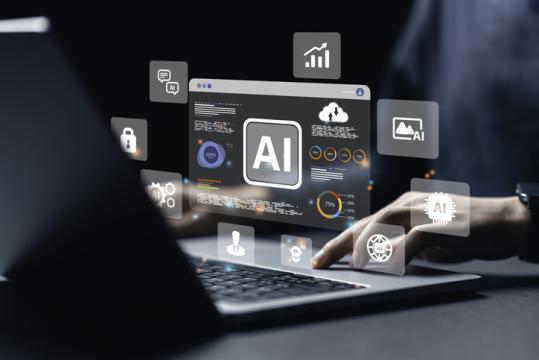The Evolving Role of AI in Benefits Administration
The world of work is changing fast, with people working from home, in the office, or a mix of both. This keeps HR teams on their toes, especially when it comes to benefits. That’s where AI, widely known as Artificial Intelligence, comes in – like a super-powered assistant to help HR manage everything smoothly.

AI can automate tasks, crunch data like a champ, and even give personalized advice. This means HR can be more efficient, make better decisions, and keep employees happy.
Let’s explore three key opportunities where AI can improve benefits administration and identify potential risks associated with its implementation.
Employee Interactions
Employee engagement is consistently a top issue for HR departments. Having the right level of engagement with benefits material that resonates, particularly during key periods such as Open Enrollment, can drive employee satisfaction with the company.
AI-driven solutions are transforming how organizations engage with employees regarding benefits. The use of AI-assisted chat engagement allows participants to receive support for new hire onboarding, open enrollment, and life event inquiries when they are ready, 365/24/7.
Additionally, the streamlined document intake and review processes, often associated with Dependent and Life Event Verification services, via AI analysis ensure accuracy and facilitate efficient interactions. This translates to a smoother experience for employees, faster processing times, and increased accuracy in benefit-related transactions.
Benefit Enrollment Decision Support
Employers strive to provide benefits that align with their employees’ needs and preferences. AI can assist in this endeavor by analyzing data to identify trends and preferences, enabling organizations to effectively tailor benefit offerings.
By leveraging decision support tools, plan comparisons, and personalized employee inputs, AI analyzes participant responses to utilization and risk tolerance questions alongside key underwriting demographics like age, location, and gender. This personalized approach “right-sizes” benefits coverage and tailor’s recommendations to each participant’s unique needs and preferences, simplifying the often-confusing decision-making process during enrollment periods. The result is a win-win: participants gain confidence in their selections, better understand their benefits, and express higher satisfaction with the enrollment process.
Employers gain a wealth of insight through the use of decision support tools and AI analytics which can help shape their strategy regarding benefits offered and plan attributes (i.e., deductibles, co-pays, tiers, etc.). These insights can help employers ensure they have a competitive benefit offering that evolves with their employees’ ever-changing needs.
Securing Data Accuracy and Transparency
Data modernization powered by AI is driving how organizations manage and exchange critical benefits data. Near real-time data exchanged via Application Programming Interfaces (API’s) and rigorous data hygiene practices, including validations and source-of-truth comparisons, ensure accuracy and integrity. This facilitates data normalization, faster discrepancy management, and streamlined inbound and outbound data handling of Census/HRIS files, payroll deductions, and carrier elections. This swift processing minimizes errors, accelerates enrollment, and ensures coverage is in place for participants at the right time.
Additionally, AI unlocks radical data transparency. HR professionals can gain insights into data status across the population by benefit, carrier, and other vital filters, such as division, location, and plan. These improvements in transparency, combined with an increase in data quality at program, client, and participant levels empower benefits administrators and their clients to make informed decisions based on reliable and accurate information, ultimately improving the overall experience for participants who rely on efficient benefit administration.
Navigating AI Risks Through Proactive Measures
AI can be a great tool for managing benefits, but it’s important to use it carefully. Here are some suggestions on how to avoid any bumps in the road:
First, always double-check the AI tools to ensure they work properly and provide accurate information. Just like training a new employee, you must ensure the AI is up to speed.
Continuous review of AI content is also important. A human supervising the content provided by AI must watch diligently for any bias in content to ensure that the AI material meets the standards of providing an equitable experience for all intended recipients.
And speaking of privacy, strong data security is key. It is critical to keep employee information safe, just like any important document. Think of it as a virtual vault for everyone’s benefit information.
Change is scary, and new things can be intimidating. It’s important to be open and honest. Letting everyone know what AI is for and what it can (and can’t) do helps build trust. Clear communication and training can help people feel comfortable using AI for benefits.
Finally, getting employee input is a great way to ensure the AI works for them. After all, it’s their benefit! By listening to their ideas and concerns, companies can fine-tune the AI to be more helpful and, ultimately, make everyone happier with the benefits system.
AI is like a super-powered assistant for managing benefits. It cuts through the busy work, helps everyone make smarter choices, and keeps track of everything accurately. Sure, there can be a few hiccups, but by planning, we can make sure AI benefits everyone. This means a smoother, more personalized experience for employees and a happier, healthier workforce overall. As AI gets even smarter, it’ll play a bigger and bigger role in keeping employees covered and happy.